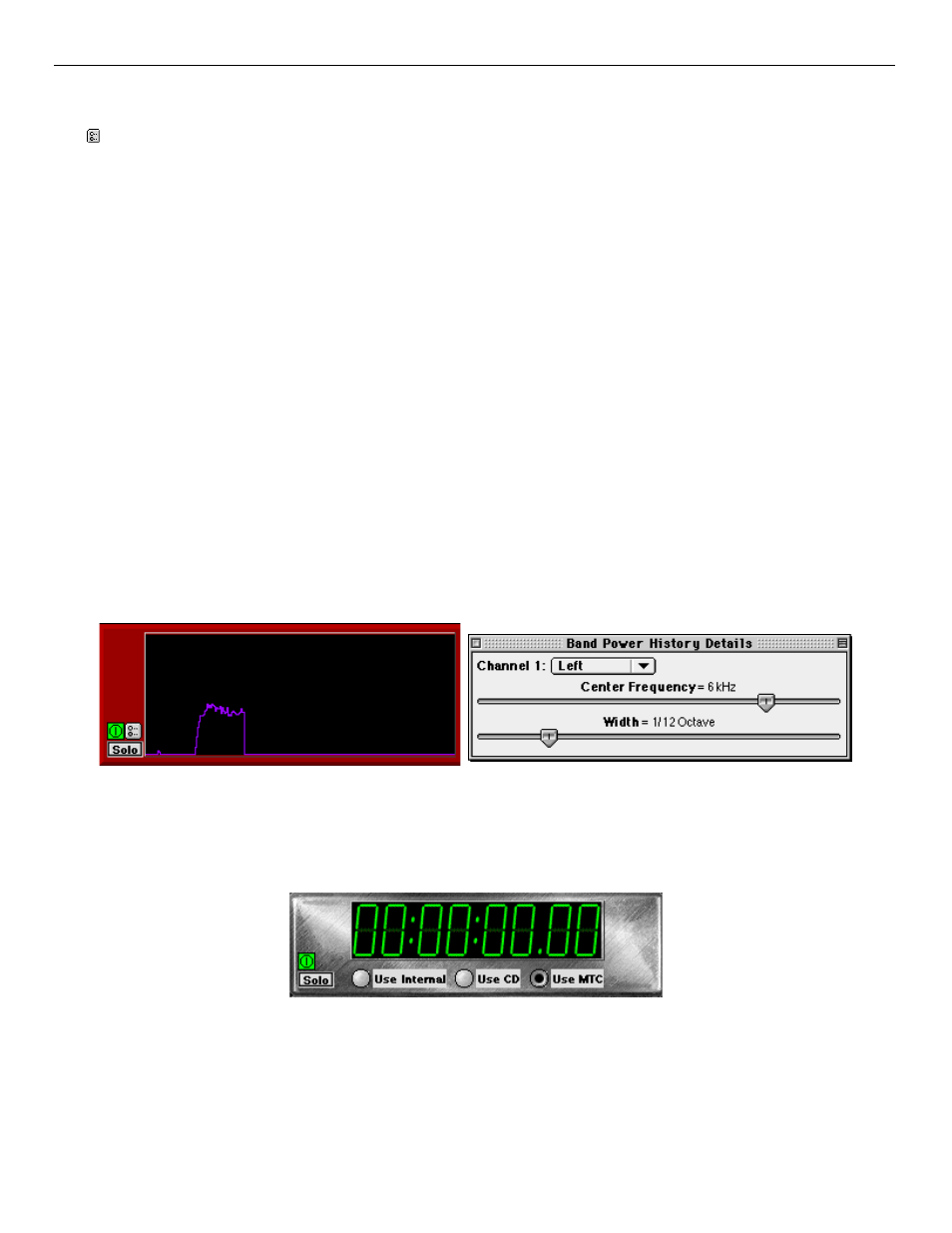Band power history, Timecode clock – Metric Halo SpectraFoo Version 1.5 User Manual
Page 15

In order to help you intuitively identify the frequencies, the phase points are also colored according to their fre-
quency. You can get a color – frequency calibration chart by clicking on the Phase Torch’s parameter control button
. A mono (in-phase) signal is indicated by what looks like a torch precisely aligned with the Y axis of the scope.
The in-phase torch illustrated above “fuzzes-out” at high-frequencies because the signal used to create the display
did not have very much high frequency energy so the display is dominated by noise at high frequencies. An
out–of–polarity signal appears as a negative version of a mono signal. Delays appear as spirals within the scope.
This meter is very useful when recording a musical instrument with multiple microphones. You can use the Phase
Torch to identify the frequency ranges in which phase cancellations are occurring as a result of the comb filter cre-
ated by the use of multiple mics on a single source. Phase points that are oriented on the negative Y axis of the meter
represent the null points of the comb filter. This can help set up multiple microphone placements that create nulls
which are outside of the critical frequency range of the instrument you are recording.
The Phase Torch can can also be used as a very quick and elegant troubleshooting tool for identifying phase anom-
alies in studio wiring. If you suspect a phase compensation or delay problem between multiple audio paths in your
studio, simply run a common signal into two paths and route one to SpectraFoo’s left input and the other to its right
input. If a phase problem exists, the Phase Torch will display it immediately. The Phase Torch is also effective for a
number of other applications including:
• Setting azimuth on analog tape recorders
• Checking for time alignment in complex PA systems
• Identifying frequency dependent phase and polarity problems (such as an out of polarity high frequency dri-
ver in a sound reinforcement system).
• Frequency sensitive mono compatibility analysis
Band Power History
This instrument allows you to see the history of the amount of power in a specified band of the spectrum. The instru-
ment’s details window allows you to set the center frequency and the bandwidth of the power band that you are inter-
ested in monitoring. The preset values for this instrument are 1/12 of an octave at 6kHz. This allows it to function
as a very effective sibilance meter.
Timecode Clock
The timecode clock can lock to external timecode sources such as tape machines with SMPTE, the Alesis BRC,
Tascam SY88, and MOTU MTP–AV or any other device capable of producing MIDI Time Code. In addition, the
clock can lock to the computer’s internal clock or the computer’s CD drive.You can select between the different time-
code sources by clicking on the radio buttons under the timecode readout. The format of the timecode readout is the
standard SMPTE HH:MM:SS.FF. SpectraFoo will reference all recorded captures to timecode.
SpectraFoo Operation Guide
14
